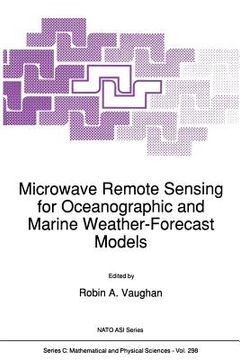Share
Microwave Remote Sensing for Oceanographic and Marine Weather-Forecast Models (in English)
Robin A. Vaughan
(Illustrated by)
·
Springer
· Paperback
Microwave Remote Sensing for Oceanographic and Marine Weather-Forecast Models (in English) - Vaughan, Robin A.
$ 52.09
$ 54.99
You save: $ 2.90
Choose the list to add your product or create one New List
✓ Product added successfully to the Wishlist.
Go to My WishlistsIt will be shipped from our warehouse between
Wednesday, May 22 and
Thursday, May 23.
You will receive it anywhere in United States between 1 and 3 business days after shipment.
Synopsis "Microwave Remote Sensing for Oceanographic and Marine Weather-Forecast Models (in English)"
The power of microwave remote sensing for studying the oceans of the world was demonstrated conclusively by the SEASAT mission in 1978. Since then, no further satellite-flown instruments have been available to provide further data of this type. However, the proposed launch of ESA's ERS-1 satellite will lead to a new set of active microwave instruments being flown in space in 1990. Even though similar data has been obtained from aircraft-flown instruments SAR, scatterometers, altimeters etc. - a great deal of activity has been taking place to develop the necessary expertise in handling and analysing such data when it comes on-stream from ERS-1 and from subsequent satellites. It was against this background that the scientific Affairs Division of NATO again agreed to sponsor an ASI in Dundee in 1988. Its purpose was to review existing knowledge of the extraction of marine and atmospheric geophysical parameters from satellite-gathered microwave data and to enable scientists to prepare themselves and their computing systems to utilise the new data when it becomes available. The importance of the data is largely as input parameters to assist in the fitting of boundary conditions in large computer models. The course was concerned more with the non-imaging instruments, that is with passive radiometers, altimeters and scatterometers, than with the (imaging) synthetic aperture radar.
- 0% (0)
- 0% (0)
- 0% (0)
- 0% (0)
- 0% (0)
All books in our catalog are Original.
The book is written in English.
The binding of this edition is Paperback.
✓ Producto agregado correctamente al carro, Ir a Pagar.

